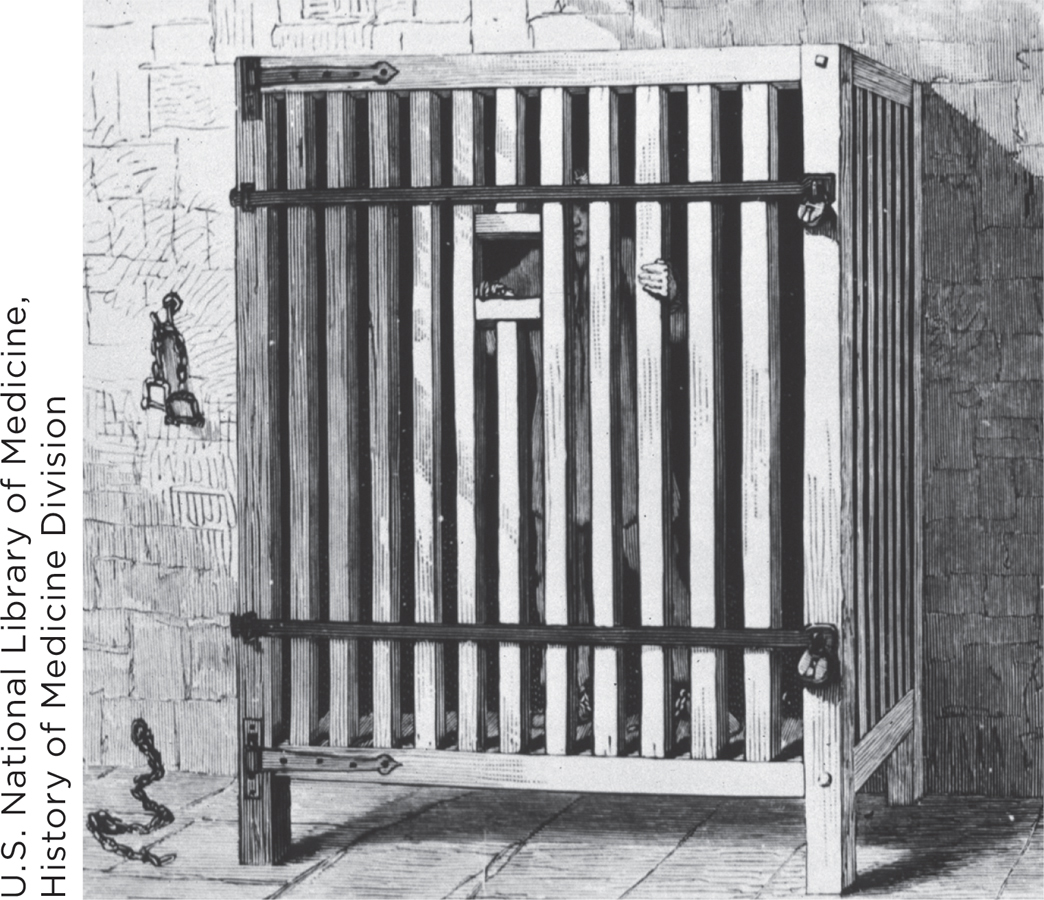15.1 Psychological Disorders
Mental disorders have been part of the human experience for as long as there have been humans. In the ancient world, people believed disorders were caused by evil spirits. Treatments reflected this belief. In ancient Egypt, for example, people with mental disorders were taken to temples, where animal sacrifices were performed to appease the gods (Kellogg, 1897). Many cultures have used magical amulets (jewelry thought to have mystical power) to drive away evil spirits (Coury, 1967; Millon, Grossman, & Meagher, 2004). A surgical procedure called trephination, in which a hole is cut in the skull (presumably to let evil spirits escape), was used to treat mental disorders as early as 3500 years ago (Mashour, Walker, & Martuza, 2005).

Modern science, of course, rejects the idea that supernatural forces cause mental disorders. A leading candidate to replace this perspective is a natural-
The Medical Model of Psychological Disorders
Preview Questions
Question
 Do we diagnose and treat psychological disorders in the same way as we do physical illness?
Do we diagnose and treat psychological disorders in the same way as we do physical illness?
 What are the advantages and disadvantages of focusing on the internal causes of psychological illness?
What are the advantages and disadvantages of focusing on the internal causes of psychological illness?
The medical model of psychological disorders is a framework for thinking about causes of, and treatments for, disorders. Although different people use the term “medical model” in slightly different ways (Shah & Mountain, 2007), the general assumption is that psychological disorders are similar to physical illnesses. To understand the medical model of psychological disorders, then, let’s first consider how professionals think about physical illnesses.
When diagnosing and treating physical illnesses, physicians distinguish symptoms from their underlying causes. If you experience fatigue, fever, or a sore throat, these are symptoms. Your doctor tries to diagnose their underlying biological cause (e.g., a bacterial infection). Once a diagnosis is determined, treatment targets the cause, not just the symptoms (e.g., your doctor gives you an antibiotic to fight the infection, not an energy drink to fight the fatigue).
658
In the medical model of psychological disorders, psychological experiences (e.g., prolonged, intense feelings of anxiety or depression) are seen as symptoms. A psychologist or psychiatrist who adopts the medical model looks for the symptoms’ underlying cause (Elkins, 2009). The cause might be conceptualized at a psychological level of analysis (e.g., a troubling memory or belief) or at a biological level (e.g., abnormal brain functioning). Therapists then treat the underlying cause; for example, they might prescribe a medication designed to alter brain functioning in a way that alleviates a person’s depression.
Many mental health professionals embrace the medical model of psychological disorders (Elkins, 2009; also see Nesse & Stein, 2012; Shah & Mountain, 2007). However, many others question it. The medical model has both advantages and disadvantages.
ADVANTAGES OF THE MEDICAL MODEL. One big advantage is that the medical model has promoted the ethical treatment of people suffering from severe mental illness. This advantage is stark if you compare current society to earlier history, before the medical model was formulated.
In Europe hundreds of years ago, mental disorders were seen as a personal moral failing—
The medical model opened the door to more humane care. Once psychological disorders were viewed as illnesses rather than evils, society pursued treatment rather than punishment.
A second advantage is that the medical model ushered in the modern era of drug therapies. Once it was recognized that mental disturbances could have biological causes, research sought drugs to alter the problematic biology. As you will see in this chapter and the next, drug therapies have greatly benefited individuals suffering from some types of psychological disorder.

DISADVANTAGES OF THE MEDICAL MODEL. So what are the medical model’s drawbacks? One was first identified in the 1960s by psychiatrist Thomas Szasz (1960, 2011) and sociologist Erving Goffman (1961; see Mac Suibhne, 2011): The medical model can detrimentally affect psychologists’ and psychiatrists’ views of their patients. The effect is based on the term, or “label,” the medical model uses to describe people who suffer from psychological distress.
When have you been assigned a label that influenced others’ treatment of you?
In the medical model, people experiencing psychological distress are said to be mentally “ill.” The label “ill” (or “illness”) can change the way therapists—
A second potential drawback of the medical model concerns the search for the causes of mental disorders. The medical model directs professionals’ attention to causes “inside the head” of the patient: inner illnesses that explain observed symptoms. The drawback is that looking “inside” may distract attention from important causes “outside” in the environment. Life stress, interpersonal relationships, and other social and environmental factors may be the root causes of many people’s distress and thus the appropriate targets of interventions to improve mental health.
659
These drawbacks motivate alternatives to the medical model. Rather than searching for a specific mental illness inside the person, some therapists try to understand the person as a whole and the social world in which he or she lives (Barker, 2004). They avoid calling people “mentally ill” or “patients” because those terms make people sound sickly and incompetent. Instead, they refer to distressed individuals as their clients (Rogers, 1951) or, simply, as persons (Tudor & Worrall, 2006). Humanistic therapy, discussed later, is one prominent approach that rejects the medical model.